SWEA 30 years
If you are a Swedish woman and you are living abroad, chances are you either are a SWEA, have contemplated becoming a SWEA or at least know one.
-
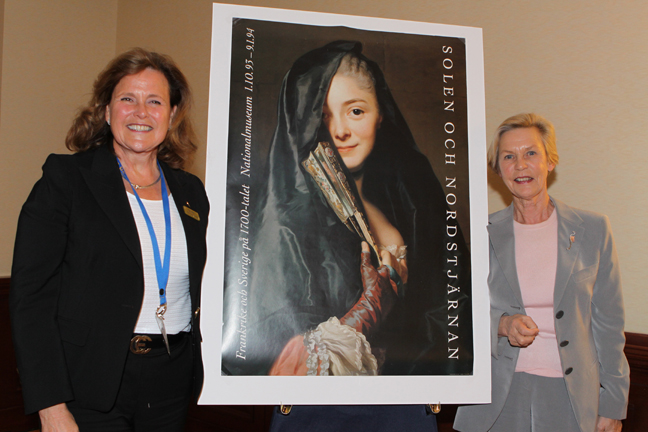 SWEA Intl President Åsa Lena Lööf and Barbro Sachs Osher with a poster from Nationalmuseum, Stockholm. (No, it isn’t us, i.e., Nordstjernan—the poster is from a 1993/94 exhibition in Sweden and France about the two countries in the 18th century.) All photography: Kerstin Alm
SWEA Intl President Åsa Lena Lööf and Barbro Sachs Osher with a poster from Nationalmuseum, Stockholm. (No, it isn’t us, i.e., Nordstjernan—the poster is from a 1993/94 exhibition in Sweden and France about the two countries in the 18th century.) All photography: Kerstin Alm -
-
SWEA, Swedish Women’s Educational Association, the non-profit global network for Swedish and Swedish-speaking women who are or have been living abroad was celebrating its 30th anniversary with an international conference in Washington.
Forget exchanging baking recipes and leave the knitting at home, please! SWEA is about something else entirely: Its objective is to protect the Swedish language, support and inform about the Swedish culture and traditions. SWEA also acts as an intermediary in supplying personal and professional contacts and establishes a network for its members throughout the world. Like a global sisterhood of sorts.
“When I lived in Los Angeles in the late 70s as a graduate student, I heard of some Swedish women who were arranging a Swedish Christmas fair,” Åsa-Lena Lööf, SWEA’s International President, tells me. “This was the beginning of SWEA. Little did I then realize that, thirty years on, I would be deeply involved in the organization and its network.”
It was while she was headmistress at the Swedish School in London that Lööf came to understand the greatness of SWEA. There, she saw the needs of many women who had moved from Sweden with their families, women used to a working life in Sweden and were now left in limbo, trying to find their way in a new country.
“For these young mothers, SWEA became a lifeline, it became a way to find friends and professional contacts as well as playmates and babysitters. It was then that my commitment to the organization was born.”
Today SWEA has more than 8500 members in 76 local chapters in 35 countries. It’s an organization totally dependent on voluntary work. Of the 8500 members more than 1000 are actively involved in the daily work around the world. The local chapters have their own different characters influenced by their surroundings. The Seoul chapter has different activities and needs than the Dubai and Chicago chapters. They all provide their own events and activities in accordance with the conditions and traditions in the countries in which they operate. It is in the chapter that you get local knowledge and SWEA becomes your safety net in an oftentimes very foreign environment. SWEA is where you find a sense of belonging and are able to indulge in Swedish traditions: Midsummer, Lucia and Christmas. All these events spread invaluable good will and enhance the local view of Sweden well beyond the Swedish community. -
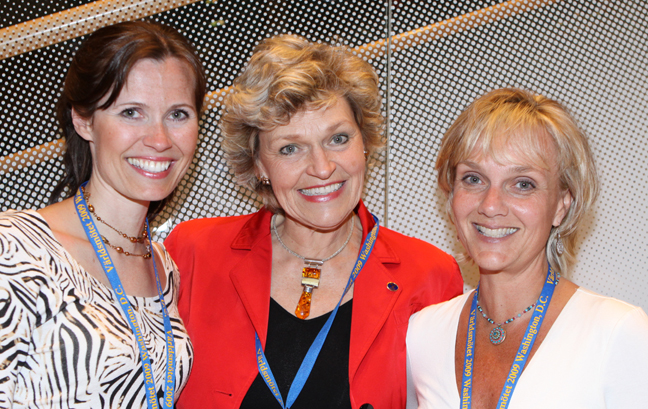 Tina O’Malley, president SWEA Chicago; Christina Moliteus, former president SWEA Intl; Filippa Leijohnhufvud-Reading, president SWEA South Florida.
Tina O’Malley, president SWEA Chicago; Christina Moliteus, former president SWEA Intl; Filippa Leijohnhufvud-Reading, president SWEA South Florida. -
-
Hi-tech sisterhood
Where do you buy Kalles Kaviar in Hong Kong? Can you recommend a good pediatrician in Paris? Wherever in the world you may land, SWEA can help you with small yet significant matters as well as more dramatic ones. Christina Moliteus, former President of SWEA International, calls SWEA her “Swedish family outside of Sweden.”
“We take care of each other,” she says. “What got me started as a SWEA was the need for roots. The longer you stay abroad, the more important roots become. My life here is very American, so SWEA became my Swedish connection, and that was very important. I also think it’s good to give back a little to our country, to help sell Sweden.”
Moliteus says that SWEA today is a diverse sisterhood, although most new members are between 20-35 years old looking for colleagues and friends.
“They stay in touch through Facebook,” she says.
Lööf agrees, adding that SWEA today is all out hi-tech, a sisterhood connected through cyberspace.
“It is via local and international web pages, e-mails, and VOIP that we now run much of our organization,” she says. “We operate in pretty much all 24 time-zones, and SWEA never sleeps thanks to the technology we have embraced - a real necessity for a truly global organization.” -
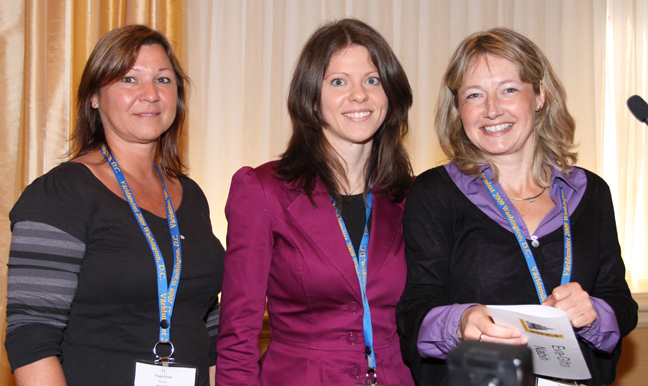 The creative clique—L-R: Li Ansefelt-Thornton Hawaii, webmaster; Anna Sjöholm, Milano, Editor of Forum; Anne Peterson-Bjur, Paris, SWEA-Nytt.
The creative clique—L-R: Li Ansefelt-Thornton Hawaii, webmaster; Anna Sjöholm, Milano, Editor of Forum; Anne Peterson-Bjur, Paris, SWEA-Nytt. -
SWEA during disasters
A friend in need is a friend indeed, the saying goes. If true, then SWEA is indeed a friend.
“SWEA’s engagement in catastrophes really began with 9/11,” explains Moliteus. “There were 80 Swedes stranded in New York without homes then. In two hours Mona Jonsson, a SWEA, found them temporary housing.”
This was an eye opener for the Swedish Ministry of Foreign Affairs (UD), who knew that the consulates cannot do much since they are assigned only to help visiting Swedes.
“UD knows we’re local,” Moliteus continues. “So they’ve reached out to all the chapters, asking ‘What can you do?’ We know how to find doctors and lawyers and so on in a hurry. So today, should anything happen, UD has our numbers. We were there during Katrina, during the tsunami, and the recent earthquake in Italy. During Katrina, SWEA helped drive Swedes into Houston, TX where they stayed at a local IKEA.” And it need not be disasters like 9/11 or Katrina for SWEA to step in.
“There was a woman whose daughter was traveling to Mallorca only to discover she had no hotel room,” says Moliteus. “The woman called a SWEA and half an hour later her daughter had a place to stay. That’s how smooth our network is.” -
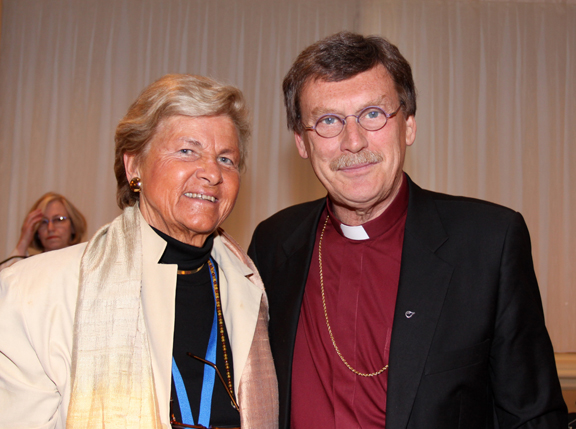 Agneta Nilsson, founder, creator, visionary, with Bishop Lennart Koskinen, among the speakers at the conference.
Agneta Nilsson, founder, creator, visionary, with Bishop Lennart Koskinen, among the speakers at the conference. -
Looking ahead
Lööf believes the uniqueness of SWEA lies in the combination of the local and the global, the similarities and the differences creating a continuously growing network with endless possibilities.
“Many are the stories of lifelong friendships made and help that has been provided through this unique voluntary network of Swedish women,” she adds.
The program for the 30th anniversary, which was celebrated in Washington at the House of Sweden, shows that SWEA is looking forward, rather than back: Speakers included Tony Svensson, Executive Director of IS North America, Liselott Bergman, officer in charge of analyses at the Swedish Institute, and Barbro Osher, Consul General in San Francisco with topics like the development of the Swedish language, mentorship, and Sweden and the new communicative platform. -
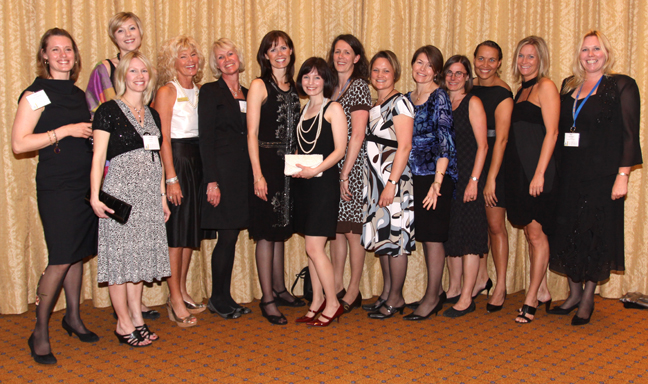 Where some organizations fail, in appealing to the younger generations, SWEA was always able to reinvent itself and grow to embrace new members.
Where some organizations fail, in appealing to the younger generations, SWEA was always able to reinvent itself and grow to embrace new members. -
All photography: Kerstin Alm
-
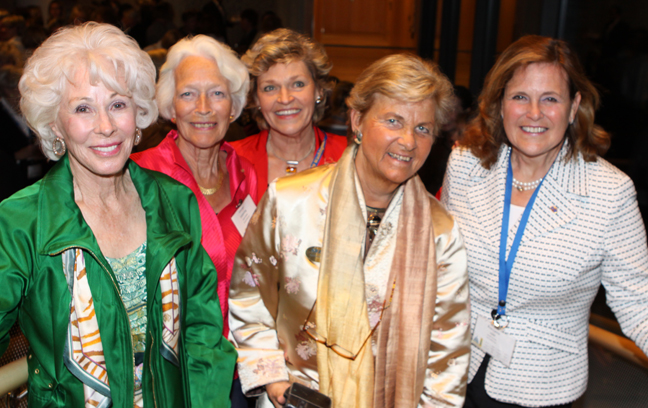 Previous SWEA Intl presidents, L-R: Vanja Haley, Louise Enhörning, Christina Moliteus, Agneta Nilsson with SWEA Intl President Åsa Lena Lööf.
Previous SWEA Intl presidents, L-R: Vanja Haley, Louise Enhörning, Christina Moliteus, Agneta Nilsson with SWEA Intl President Åsa Lena Lööf. -
Facts:
The idea for SWEA came during the 1970s when Agneta Nilsson was arranging a Swedish Christmas Fair in Los Angeles and realized a lot of Swedish women there wanted to get together. The first SWEA chapter was born in California in 1979. SWEA supports projects with Swedish connections and education through scholarships (the Swedish program at Columbia University, New York, for instance is partly sponsored by SWEA). The sum of donations and scholarships from last year was $155,000 (excluding the three international scholarships which are $10,000 each). SWEA’s international network is becoming a more important resource for Swedish business abroad.
More info, see www.swea.org -
‘Moder’ SWEA
Agneta Nilsson, founder, creator, visionary, now also Heders-ÅSKa (Årets Svenska Kvinna)—SWEA International appointed its founder ‘Woman of the Year’ at its recent International Conference.
SWEA’s success story isn’t just one person’s doings. Several gifted and energetic Swedish women have contributed, but the fact remains that it was Agneta Nilsson who first sparked the fuse. Someone has to come up with the idea of creating an international network. She probably didn’t think that her initial chapter in Los Angeles would explode around the world—in Paris, Bejing, Detroit—everywhere Swedish women call home. But explode it did and in no small way at that! Wherever you go, from the glittery night spots of Paris to dusty old rooms in Detroit or the rice fields of China, well Junebe not rice fields anymore, you’ll find Swedish women convening and enjoying the promotion of Swedish culture and traditions abroad.
At Nordstjernan we bow our heads, and congratulate a most deserving SWEA Woman of the Year. -
-
-
